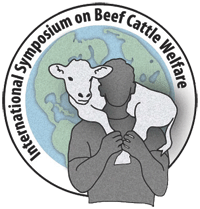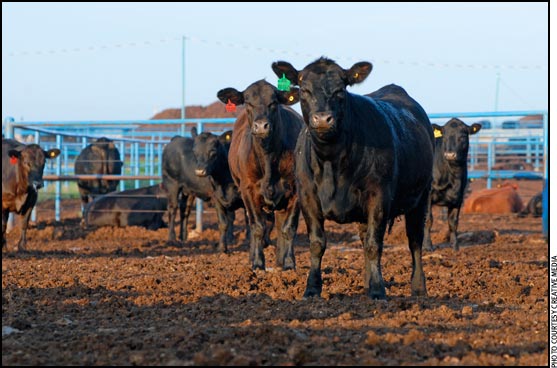Improvements in the Welfare
of Feedlot Cattle
Conditions for feedlot cattle have improved with changes implemented in the last 30 years.
Canadian veterinarian Kee Jim foresees a bright future for North American beef producers. A professional consultant with Alberta-based Feedlot Health Management Services, Jim addressed the 2012 International Symposium on Beef Cattle Welfare in Saskatoon, SK, June 5-7, saying current cow numbers may be the lowest that audience members will see during their lifetimes. He expects cattle production to grow in response to increased global demand for high-quality beef.
Jim also said he believes the beef industry can stand up to scrutiny related to animal welfare. Based on his work with Canada's cattle feeders, he said animal welfare among feedlot cattle has improved dramatically during the last three decades.

"I'm convinced that I'd rather be a feedlot steer today than 30 years ago," stated Jim, citing improvements for five major categories:
- physical infrastructure;
- health management;
- nutrition;
- management's consideration for reducing animal suffering; and
- feedlot personnel training.
With regard to infrastructure, Jim noted improvements to feedlot design, including better pen drainage. That, along with bedding strategies, has reduced the effects of mud.
Cattle handling facilities have improved, along with animal waterers. Health management has been enhanced by chuteside data collection for individually identified animals. Vaccination programs, improved pen-checking techniques and more effective metaphylactic and therapeutic protocols have lowered mortality and morbidity rates.
According to Jim, greater involvement by veterinarians has helped managers reduce the incidence of animal suffering. Routine consultation with nutritionists has aided efforts to balance rations with consideration of weather extremes.
"It's all had a positive impact on the attitudes and awareness of owners and managers of feedlots," added Jim. "It shows that by getting involved within the system, [consultants] can be instruments of change."
Jim said employee training has advanced through development of standard operating procedures, with assessment and audits to make sure they are implemented consistently. He also credited adoption of technologies for more effective management of facilities, health and feed.
While some people claim that consumer perceptions based on emotion trump all else, Jim said he still believes in science. He argued that science does matter, and truth and common sense do eventually prevail. As evidence, Jim noted how there has been no increase in the proportion of the general population that is following a vegan diet. Despite all the noise about animal welfare, the behavior of people has not changed dramatically. It suggests, he added, that meat must taste awfully good.
"I'm not convinced we have a big crisis in the beef cattle industry with respect to animal welfare, to the point that it affects the behavior of consumers or the viability of our markets," stated Jim. "Are things going to change over time? I believe they will, but the beef industry has the ability to adapt."
For additional coverage of the 2012 International Symposium on Beef Cattle Welfare, view the presentation summaries in the API Vitual Library. Go directly to the page at http://bit.ly/MsqCPv or drill down from www.api-virtuallibrary.com following this path: Meeting Sites → Other Industry Meetings → News Coverage → Click here.
[Click here to go to the top of the page.]













